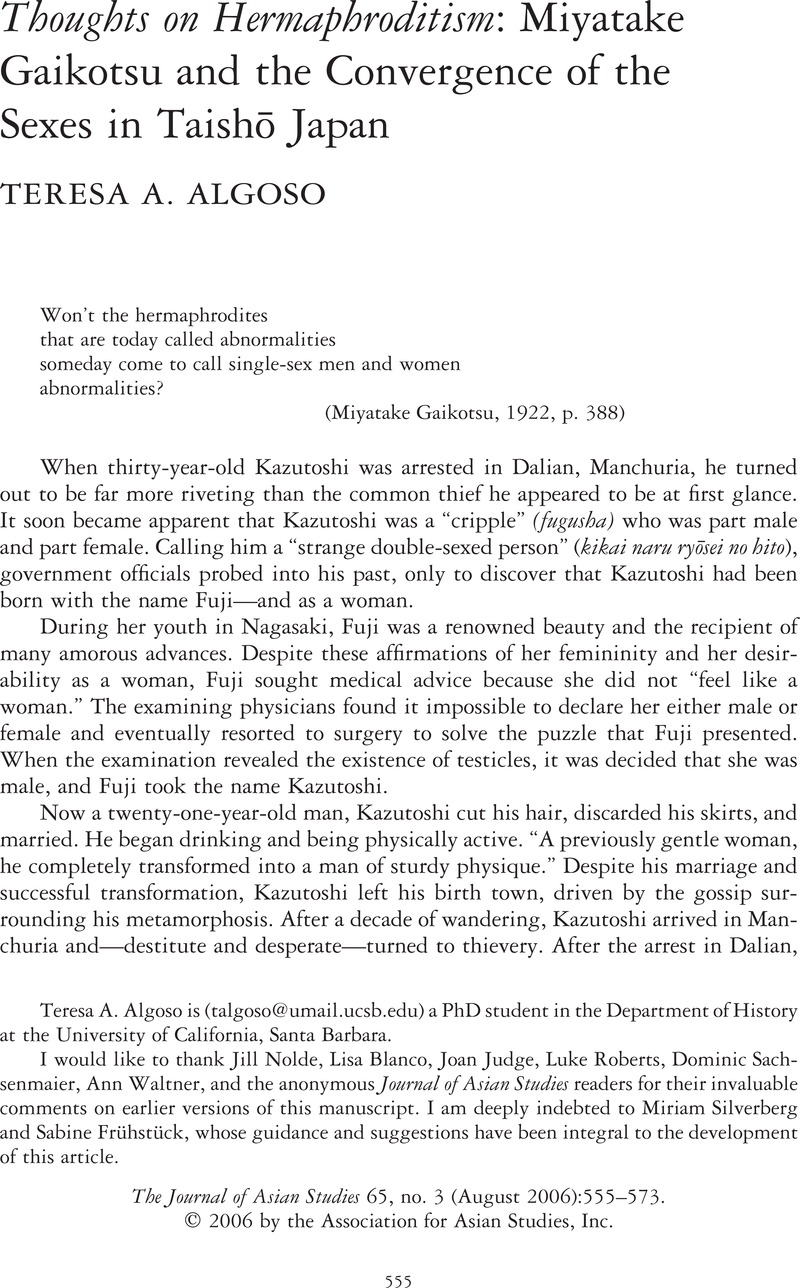Crossref Citations
This article has been cited by the following publications. This list is generated based on data provided by Crossref.
Pflugfelder, Gregory M.
2012.
The Nation-State, the Age/Gender System, and the Reconstitution of Erotic Desire in Nineteenth-Century Japan.
The Journal of Asian Studies,
Vol. 71,
Issue. 4,
p.
963.
Kahan, Benjamin
2017.
Conjectures on the Sexual World-System.
GLQ: A Journal of Lesbian and Gay Studies,
Vol. 23,
Issue. 3,
p.
327.
Frühstück, Sabine
2020.
Introduction: queer lives in contemporary Japan.
Asian Anthropology,
Vol. 19,
Issue. 2,
p.
77.
Soderlund, Gretchen
2024.
The Cambridge World History of Sexualities.
p.
94.





